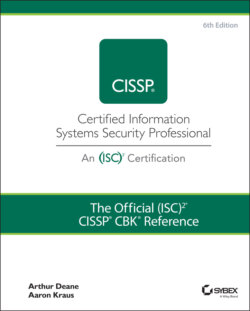Читать книгу The Official (ISC)2 CISSP CBK Reference - Leslie Fife, Aaron Kraus - Страница 35
Mergers and Acquisitions
ОглавлениеA merger is the combining of two separate organizations that creates a new, joint organization. An acquisition is the takeover of one organization by another. While mergers and acquisitions (M&A) have different business approaches, they share many of the same security concerns and are often discussed together.
There are countless potential security risks when a company acquires another company or when two organizations decide to merge. For any merger or acquisition, it's imperative that organizations consider these risks and identify appropriate mitigations before pulling the trigger. Some M&A risk factors to consider include the following:
Absorbing the unknown: When merging with or acquiring another organization, you are absorbing its entire IT infrastructure — good or bad. This means that you are acquiring systems that are likely managed differently from your own, and there may be significant differences in the security controls and processes in place. In addition, the acquired company may use homegrown or highly customized applications that will need to be securely integrated into your existing environment. Further, the acquired or absorbed company may use a different approach to threat modeling and vulnerability management (if they do these at all). Differences in security processes may result in operational challenges and inconsistent procedures during and after integration of the two businesses.
Creating new attack vectors: By adding in new systems and platforms, you are potentially creating new routes for your company to be attacked. For example, if your organization uses Windows and macOS and you acquire a company that has a fleet of Linux systems, you now have a third operating system to manage and secure.
Impacting resources: Mergers and acquisitions are challenging for everyone involved. Your IT teams may be stretched thin as they try to come up to speed on the newly acquired infrastructure while also keeping the existing systems running securely.
Disgruntled employees: In addition to the burnout that employees may feel, corporate M&A can cause severe dissatisfaction in employees who were completely happy in their previously standalone company. Insider threat is commonly considered a top security concern, and acquiring disgruntled employees poses a severe threat to an organization.
A company's security function should play a key role during any M&A conversations and should help identify potential issues related to the target organization's security posture, operations, or policy. If the two organizations have greatly different security postures, it's usually best to reconsider the deal or, at the least, consider fixing key security gaps before connecting the two company's networks and systems. Considering the risks from the previous list, an acquiring company (or both companies in a merger) should perform the following activities prior to completing an M&A deal:
Review the company's information security policies and procedures to determine how thorough they are. Take note of any missing security policies/procedures that may indicate a low level of security maturity.
Review the company's data assets and determine any applicable regulatory or compliance requirements (e.g., PCI, HIPAA, GDPR, etc.). Take particular note of any regulations that may present new requirements for your organization.
Review the organization's personnel security policies to identify potential issues or concerns. For example, your company may have compliance requirements to conduct a specific type of background check, and the target company may not be compliant.
Identify any proprietary or custom applications managed by the company and request static and dynamic application security tests be run against them to demonstrate their security posture. (SAST and DAST are covered in Chapter 8, “Software Development and Security.”)
Request results from a recent penetration test (pentest) that includes network, operating system, application, and database testing. Any critical or high findings should have a plan for remediation or mitigation.
Review the organization's use of third-party and open-source software to ensure that the software is safe and appropriately licensed.
The previous list is not intended to be comprehensive, but rather a starting point for things to consider prior to any mergers and acquisitions. Your security team needs to be an integral part of the M&A process from the initial talks through integration.
